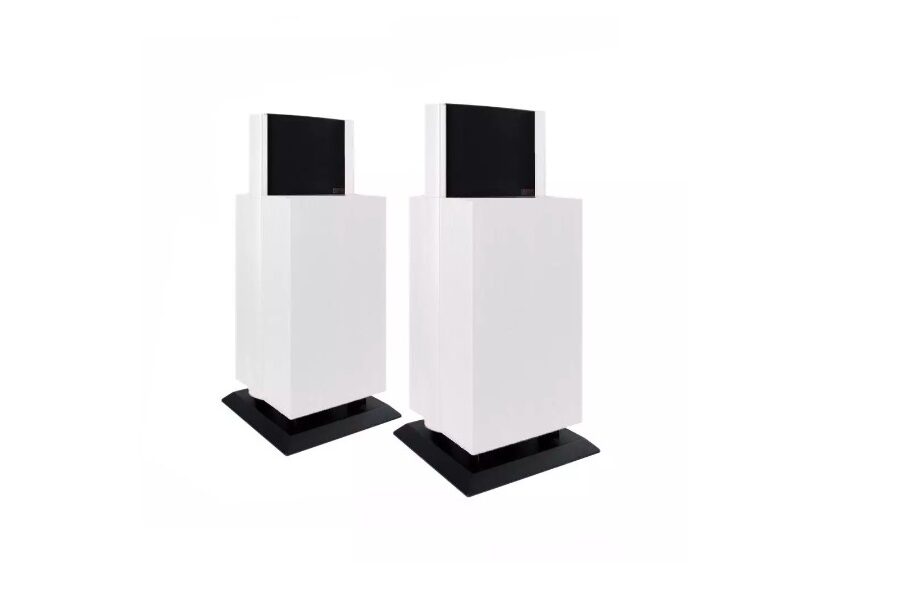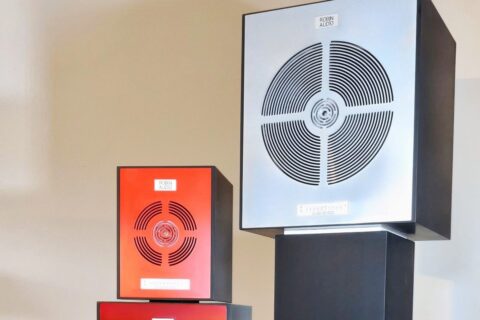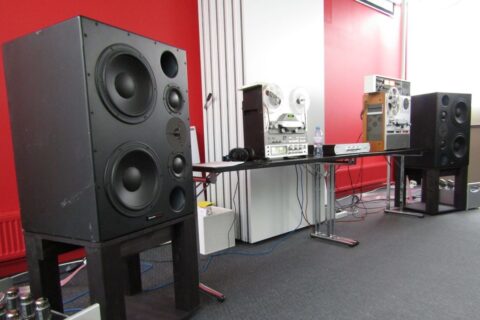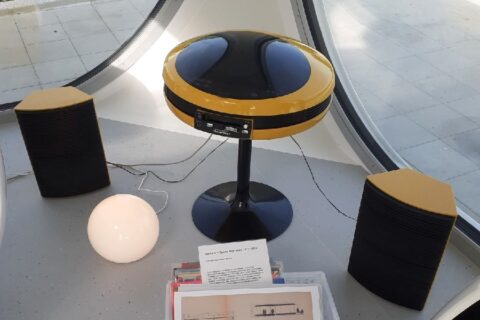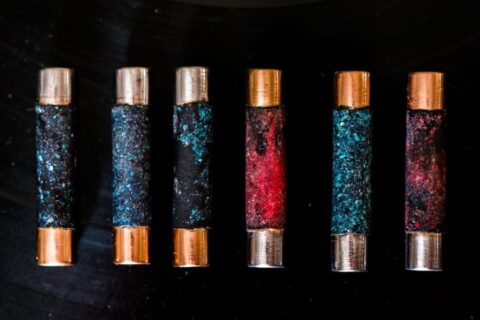I think I first became familiar with the name Oskar Heil long time back when I reviewed one of Mark & Daniel’s loudspeakers equipped with the AMT ribbon tweeter (Air Motion Transformer). As everybody nowadays knows, the AMT is a ribbon tweeter but not of a conventional type in that it moves air in a semi-perpendicular manner utilizing an accordion kind of folded diaphragm (made of polyethylene, polyester or polyimide), and the diaphragm featuring a series of aluminum struts positioned in a high-intensity magnetic field. Since that review I’ve come across AMT-transducers in I don’t how many loudspeakers starting from Adam Audio, ELAC, Martin Logan etc. etc. etc. etc.
Dr. Oskar Heil (1908-1994) was a German physicist and inventor who, in addition to his speaker element, is known for pioneering work on microwave generators and FET transistors long before the first microwave ovens and long before FETs found their way into audio amplifiers (Heil filed his FET patent in 1935).
In developing the AMT technique, Heil had two premises. According to the first one, human ear is a way more sensitive to differences (variations) in frequency domain than to loudness differences (i.e. is less sensitive to fluctuations in the amplitude of sound vibrations, and can easily adapt to them). The voice of an opera singer famously stands out well from the orchestra, even though the volume of the orchestra’s voice is many times higher than the singer’s voice. The smallest amplitude differences that humans can detect is about a decibel, equivalent to a power difference of 26 percent. On the other hand, human ear is particularly sensitive to frequency variations, especially in the middle of the hearing range, from a few hundred hertz to a few thousand hertz. In that range human ear can distinguish pitch differences of 0.06 percent (i.e. less than the vibrato of a violin). 0.06 percent versus 26 percent! No wonder then that some question the speaker industry’s obsession with amplitude differences of 1-2 decibels while ignoring, for example, the often-heard pitch shifts at high frequencies caused by the driver cone.
The second premise states that human ability to localize the direction of the sound is based on hearing the phase differences of the sound especially between 500-3000 Hz. The premise implies, the ability to locate sound sources deteriorates significantly, and the realism of the reproduction suffers, unless the driver/cone is able to reproduce transients quickly enough and without adding its own distortion to the sound. Hence, the necessity of lightness of the cone.
We need not agree on every point (even a heavier cone can be made to move quickly with a sufficiently powerful magnet), but there’s no denying that the line of thinking emanating from the above premises was what motivated Dr. Oskar Heil to develop his ideal speaker unit for medium and high frequencies: the Air Motion Transformer.
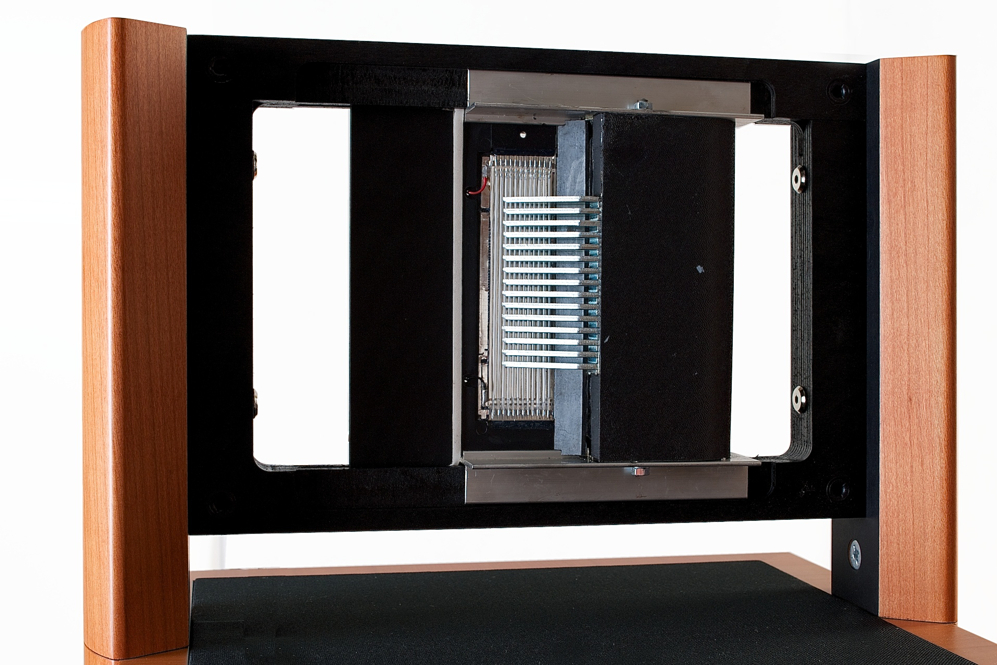
HEIL AMT/AVT RIBBON DRIVER
It’s only logical that Heil decided to focus on the cone and its resonances. The crucial task was to select the right cone material. As it is well known, any material, when it is made to play/sound, produces resonances of a different spectrum, just as musical instruments produce their own characteristic upper harmonics, and thus become recognizable. According to Heil, the same property that is useful for telling apart musical instruments is a problem for the speaker driver designer, because the cone’s own nonlinearities magnify and mask the music signal.
In order for the cone to be able to move a large amount of air through the membrane with minimal loss and to reproduce sudden transients (current/voltage shifts) quickly, the cone, according to Heil, had to be very light. But not too thin and light because it might contribute to the cone’s deformity with audible resonances and distortions. Traditionally, these issues have been solved by dampening the cone or by distributing the reproduction responsibility over a larger surface area. Heil did not want to proceed that way because neither trick helped the cone to act completely cylindrically, or to prevent distortion in the important frequency range of human hearing. This is true of dynamic drivers especially, but Heil wasn’t too excited about the electrostatic and ribbon speaker units of his time either. He wanted to try something completely different.
Dr. Heil’s Air Motion Transformer (AMT) speaker element for medium and high frequencies was patented in 1973. The membrane of the unit is very thin plastic and the moving mass on the order of a gram. Parallel aluminum conductors are metallized to the membrane at regular intervals. The diaphragm is folded accordion-like into pleats. A wire runs on the side of each fold. The flow of current in adjacent folds is always opposite. The diaphragm is installed in the middle of a strong magnetic field. The poles of the magnetic circuit come to the front and back of the membrane. The structure does not require a huge magnet or a transformer, because the resistance of the “voice coil” (aluminum conductors) is high enough. Also, the resonance frequency of the structure can automatically be set outside the reproducible frequency band.
When a music signal is fed to the unit, the pleats alternately expand and contract like bellows, forcing air out on one side of the pleats and sucking in on the other side. Relative to the movement of the conductors, the air is moved five times the amount compared to the conventional driver cone, which is why the AMT tweeter is sometimes called the AVT (Air Velocity Transformer) speaker unit. The effective surface area of a typical AMT tweeter is equivalent to the surface area of a seven-inch cone driver. AMT instigated similar technology, such as Manger’s Sound Transducer and Rowen’s LMT (Linear Motion Transformer) driver.
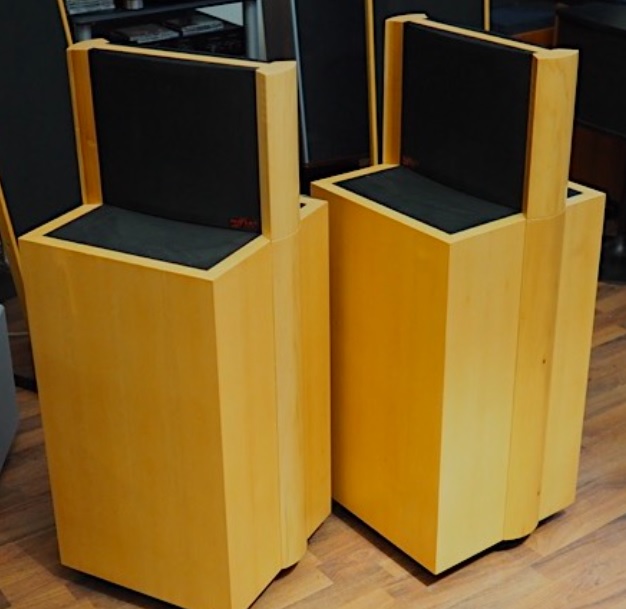
KITHARA AND HOW IT SOUNDS
The first loudspeakers utilizing the AMT technology were manufactured in the USA in California in the 1970s and 1980s. The speakers went by the name ESS Heil, and it was ESS’s Nelson Pass who assisted Dr. Oskar Heil with crossover design and the woofer selection. It appears that Heil himself would not have been too fond of these speakers, so he decided to design his own AMT such as Heil Air Motion Kithara loudspeaker. Heil was then 80 years old. It was the Swiss Precide SA that took the responsibility for the production. According to some sources, the speaker has been upgraded several times over the years (the woofer, cabinet, crossover, wiring). The pair tested in this review was from the mid 2000.
The 2-way Heil AMT Kithara looks like its creator, fully designed to move air quickly and efficiently in the area that is most important to human hearing. Heil Kithara weighs 35kg and measures 110 cm high. On top there’s a long AMT/AVT element in a wooden console radiating sound to both directions, ie. is a dipole tranducer. Just below the Heil mid/tweeter there’s a reflex loaded 10 inch woofer mounted facing upwards for the best phase relationship with the high frequency AMT unit. The port is at the bottom of the cabinet 180 degrees to the floor. Kithara’s AMT unit is not a typical AMT driver that can be found in numerous 2/3-way designs handling the highest octaves. The AMT unit in Kithara is made to reproduce frequencies from 700Hz upwards, meaning that it is able to cover full five octaves, which rather makes it like a quasi wide bandwidth driver. The woofer section does 28Hz – 700Hz.
I drove the Kitharas with Brinkmann Marconi hybrid-preamp and Brinkmann 250/150W mono blocks. Irrespectively of Kithara’s high 94 dB (W/m) sensitivity I got the impression that such transistor amps would be the way to go with these speakers, rather than their smaller power tube cousins. The nominal impedance is 4 ohms.
In a large, slightly sonorous space, Kithara’s tonal balance turned out to be well studied and considered, and that impression remained throughout the listening session. The sound is clearly not a result of the fantasy world of a young speaker designer. Something about the sound whispered me that the tone or tone balance had a darkish flavour. This quality was not due to excessive mid/upper bass but slightly rounded higher octaves. However, I wouldn’t say the HF department was subdued, just that the presentation was different from what I’ve heard from numerous AMT tweeters in other speakers (sealed or BR). The explanation probably lies in the fact that Kithara’s AMT driver radiates sound forward and backward (dipole), and not just forward as is the case in 9 out of 10 loudspeakers whit the AMT tweeter. The quality didn’t disturb me at all with classic or other art music, with which Kithara’s mid-tweeter rendered the sound, in the desired way, spacious and airy and nuanced. It was with certain studio material that the phenomenon reminded of itself. The listening height somewhat affected the impression but not significantly. The radiation pattern of the tall and narrow Heil unit is horizontally wider than vertically.
It is noteworthy, though, that Mark & Daniel developed, to go with the Heil’s tweeter, an Omni-Harmonizer that was asked to reproduce frequencies from 7 kHz to 35 kHz, just to add a bit of air and energy to the highest notes. Nowadays, speakers with two AMT tweeters, on in front and the other behind, are not that uncommon.
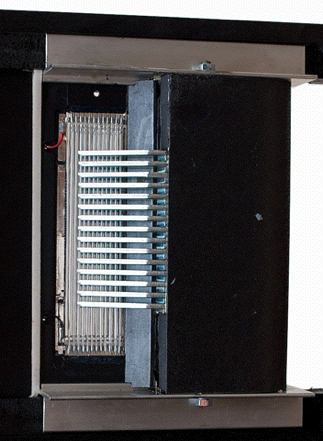
Kithara’s bass was generally fine. I personally might have taken away one or two decibels here and there (room reflections?) but no serious faults here. Plus, I was convinced that Kithara is more room friendly than speakers with forward shouting bass.
Intellectually the most intriguing question was how well or not Heil had managed to integrate his own large ribbon element with the woofer output? The risk of some sort of cancelation around the crossover frequency is likely here, depending on the distance and placement of the drivers (Kithara’s AMT unit stands 1.5-2 inches away from the center of the woofer). My take on this point was that the speaker is capable of reasonably seamless performance even though the integration isn’t perhaps perfect (some DIY enthusiasts have have reported of the unit’s inherent attenuation one and a half octaves above the crossover frequency). Subjectively the most effective way to detect problems in this regard is to listen how logically music proceeds.
When it came to frequencies between 700Hz and 7000Hz, Kithara proved absolute delicacy. Lutes and guitars benefitted from precise attacks, purity of the sound, sumptuous timbres. Thanks to its AMT unit, Kithara made many music, from Bach to Nightwish, from Bela Fleck to Ella Fitzgerald, very auspicious, very listenable. If a clean midrange and beautiful harmonics mean anything to you, Heil Kithara is able to demonstrate what a loudspeaker can achieve in this regard, always maintaining a certain level of quality, and always remaining favourable to the music in hand. However, it is an unusual loudspeaker, and therefore I recommend an audition before placing money on the table.
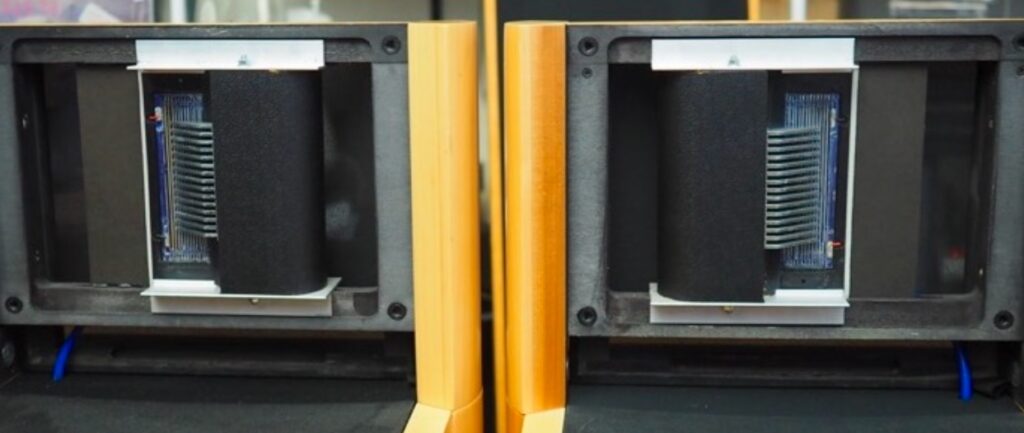
Technical data:
Type: two-way bass reflex for speaker, Drivers: AMT midrange/tweeter & 10 inch woofer; Frequency response: 28Hz – 23kHz (+/- 5dB), Crossover: 650Hz/second order (12dB/octave); Impedance: min. 4 ohm; Sensitivity: 94dB/W/m; Dimensions: 110cm x 40cm x 40cm; and weight 35kg.


